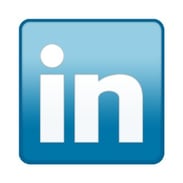 +
+ 
In my previous post, I discussed how to power your job search by using the LinkedIn Posts feature. In this post, you will learn tips for creating content within LinkedIn to help you build your brand, mindshare, thought leadership, connections, and ultimately give you a serious edge on getting the job of your dreams.
So, how is publishing on LinkedIn relevant to executive and professional job seekers?
As a creator of content on LI you can pursue a number of career advancing strategies:
You can build your thought leadership and brand, deepen your connections, and extend your online footprint to impress prospective employers. Anyone who works in technology functions or fields should show how tech and LI savvy they are by using this method.
What are some easy ways you can push out content?
- Use the Share an Update feature on your home page. See it towards the top of your home page. Your update will be brief and may or may not include a link to a longer blog post, article, white paper, resume, etc.
- Write a Post using the Publish a Post feature also on the menu bar on your home page. This is LI's long-form publishing feature. When you publish an article/post, it will be viewed by some subset of your connections. People may Like, Comment, and Share your content thus distributing it even more broadly.
Before you generate content, be sure your LinkedIn profile is complete and strong. That way, when all the people you inspired by your published words come to your profile they will see you in the right light and see your brand. So be sure to communicate your target position and industry, what you excel at, what differentiates you, and your values and style. Good luck!
Don't neglect getting expert help to create a "blow your socks off" executive resume that can make a HUGE difference in getting hired. It does for my clients and for the clients of many of my top-tier colleagues.
Become a power user of LinkedIn content and reap the rewards for years to come!




